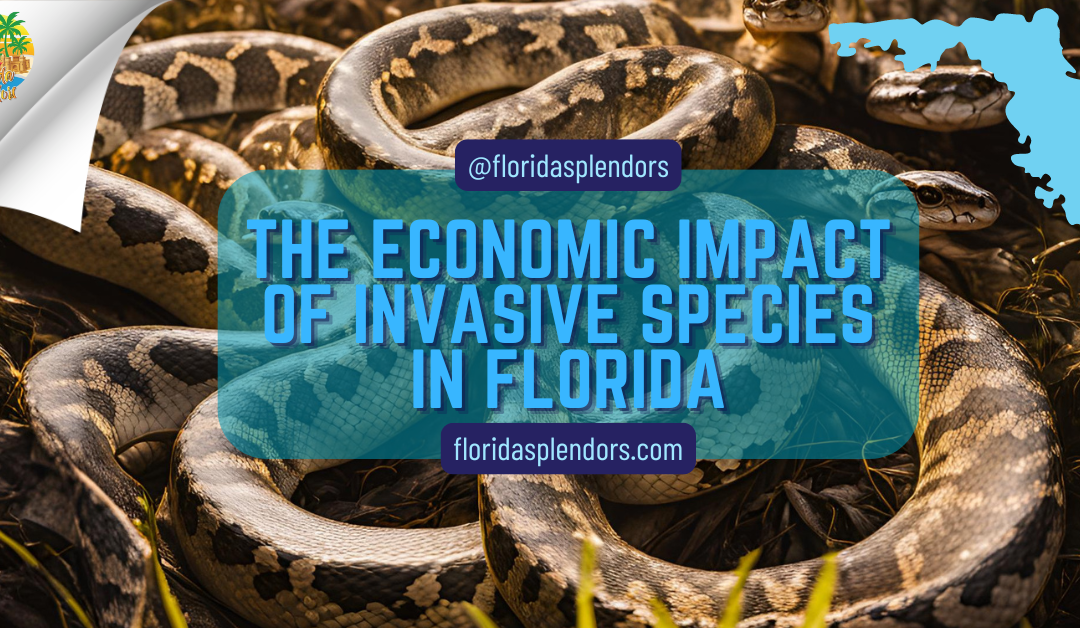==================
Florida Splendors is supported by our audience. When you purchase through one of our links, we may earn a small affiliate commission. As an Amazon Associate I earn from qualifying purchases. Your cost is not affected.
Invasive species are often seen as mere nuisances, but their impact on Florida’s economy tells a different story. The Economic Impact of Invasive Species in Florida is profound, as the state’s unique ecosystems and diverse landscapes serve as a prime target for non-native species that disrupt local wildlife and habitats. These invaders threaten biodiversity and impose significant financial burdens on critical sectors like agriculture, tourism, and fisheries. The costs associated with controlling these species and the losses incurred by impacted industries reveal a complex economic landscape that demands attention.
Understanding the economic implications of invasive species is crucial, as it highlights the urgent need for effective management strategies to protect the environment and Florida’s economy. The effects ripple through communities, influencing job opportunities, local businesses, and overall quality of life. Join us as we delve into the far-reaching consequences of these unwelcome guests, examining how they affect various sectors and exploring the measures needed to safeguard Florida’s natural resources and economic vitality.
The Economic Impact of Invasive Species in Florida: A Costly Concern for the Sunshine State
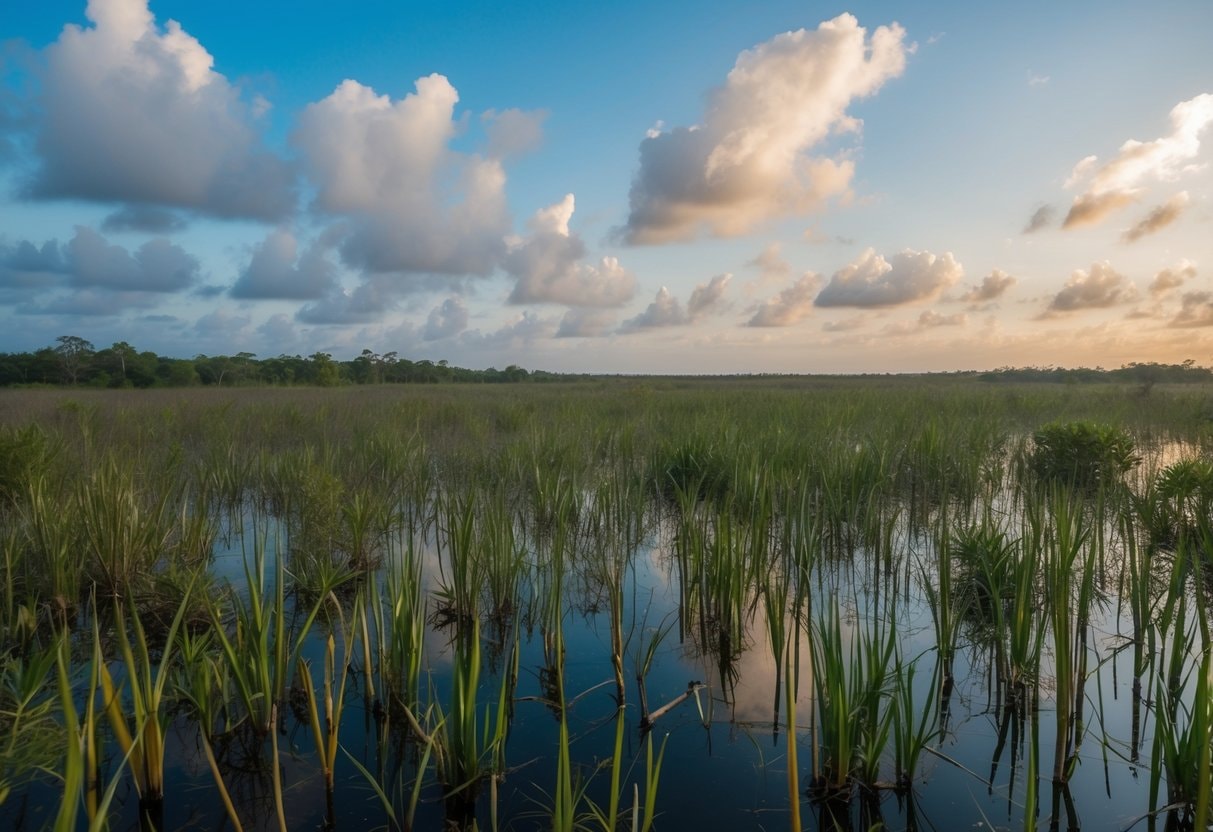
Invasive species pose a significant threat to Florida’s environment and economy. These plants and animals from other places can quickly take over and cause many problems. Invasive species cost Florida an estimated $100 million yearly to manage invasive plants. These unwanted guests affect many parts of life in Florida. They harm farms, fishing, and tourism. They also damage natural areas that many people enjoy.
Some even put human health at risk. The costs add up fast when trying to control or eliminate them. Florida faces unique challenges with invasive species. Its warm climate and many visitors make it easy for new plants and animals to arrive and thrive. Experts work hard to find ways to stop new invaders and control the ones already here. Their goal is to protect Florida’s special ecosystems and economy.
Key Takeaways
- Invasive species in Florida harm the economy, environment, and human health.
- Florida spends millions each year managing and controlling invasive plants and animals.
- Experts use various methods to prevent new invasions and limit damage from existing ones.
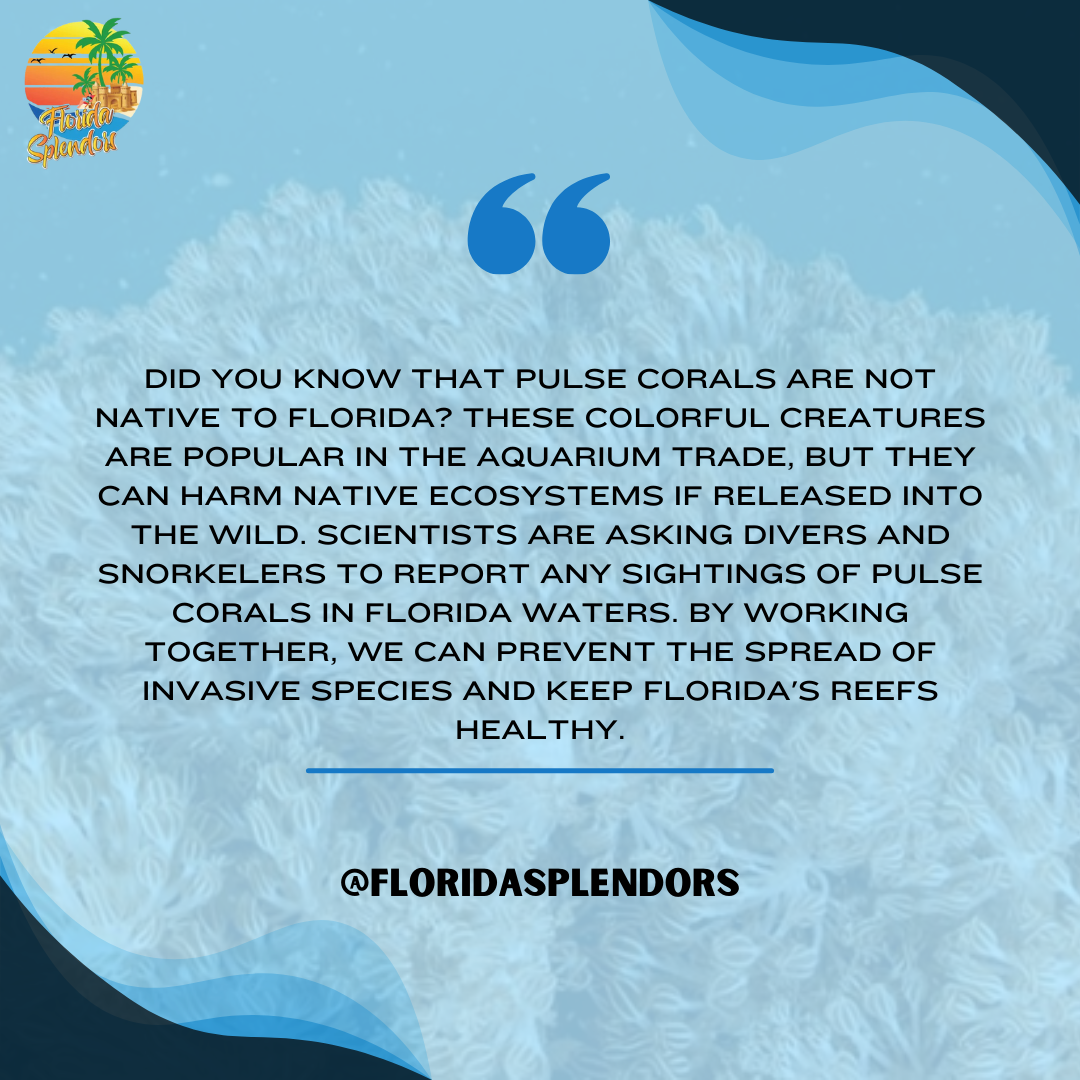
Understanding Invasive Species
Invasive species pose significant problems for Florida’s environment and economy, highlighting The Economic Impact of Invasive Species in Florida. These non-native plants and animals can spread quickly and cause harm, disrupting ecosystems and leading to significant financial costs. Let’s look at what invasive species are, how they get here, and some common ones in Florida.
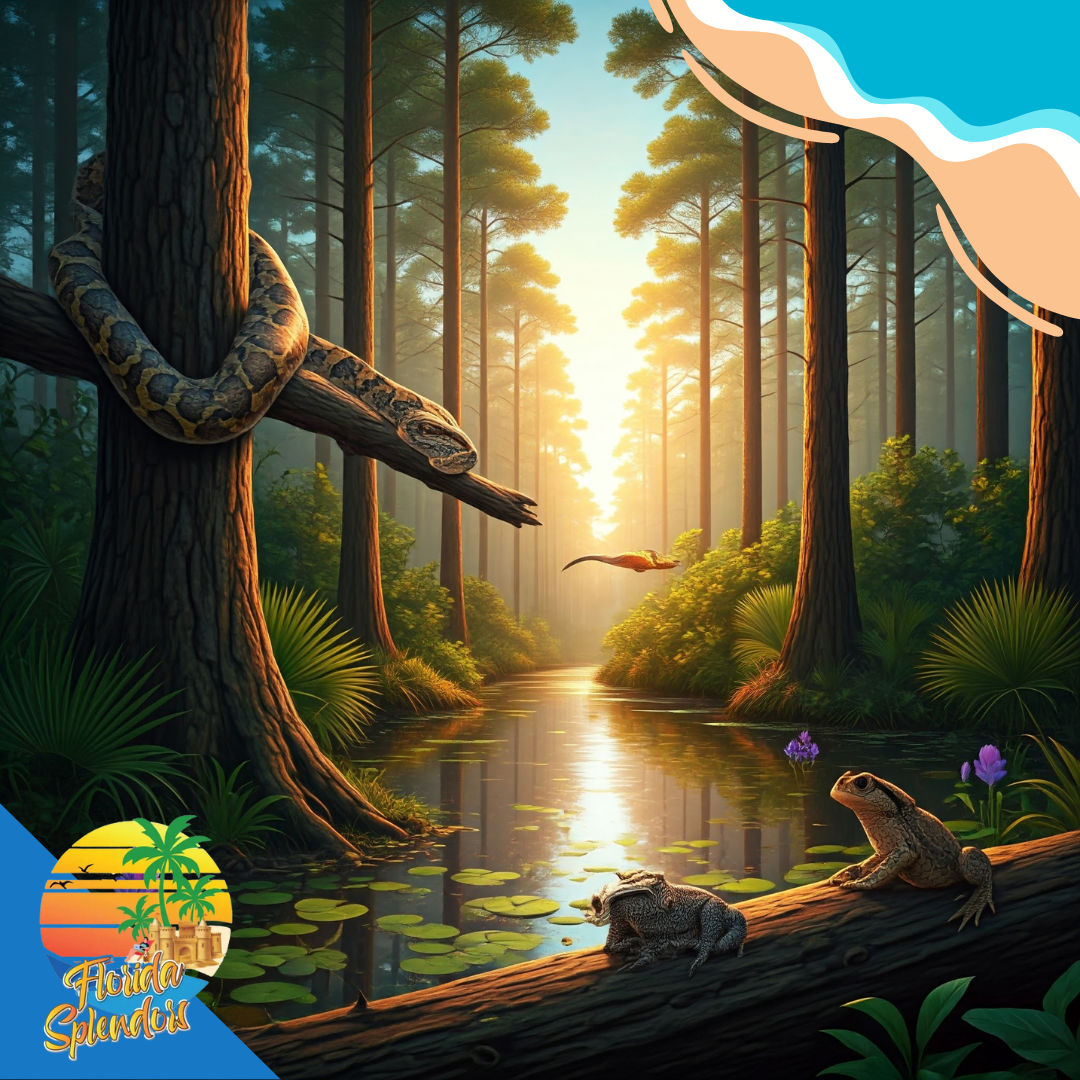
Defining Invasive Species
Invasive species are plants, animals, or other organisms not native to an area. They can cause harm to the environment, economy, or human health. These species often grow and spread fast because they lack natural predators or controls.
In Florida, many invasive species thrive due to the warm climate. They can push out native plants and animals. This hurts biodiversity and can change whole ecosystems. Invasive species have cost North America billions of dollars each year. The impacts keep growing as more non-native species arrive and spread.
Pathways of Introduction
Invasive species enter new areas in different ways:
- Accidental transport in cargo or on ships.
- Release of pets or ornamental plants.
- Escape from farms or research facilities.
- Deliberate introduction for pest control.
Human activity is the leading cause of the spread of invasive species. Global trade and travel make it easier for species to move to new places. Climate change also plays a role. As temperatures shift, some species can survive in new areas. This makes biosecurity efforts crucial to prevent new invasions.
Common Invasive Species in Florida
Florida faces many invasive species challenges. Here are some key examples:
- Burmese Pythons: These giant snakes eat native animals in the Everglades. They’ve caused big drops in small mammal populations.
- Lionfish: These fish harm coral reef ecosystems. They eat many native fish species.
- Brazilian Peppertree: This plant takes over natural areas. It crowds out native plants.
- Cane Toads: These toxic toads poison pets and wildlife. They breed fast and eat many insects and small animals.
- Water Hyacinth: This floating plant clogs waterways. It makes boating hard and hurts aquatic ecosystems.
These and other invasive species cost Florida millions in damage and control efforts yearly.
Economic Impact Assessment
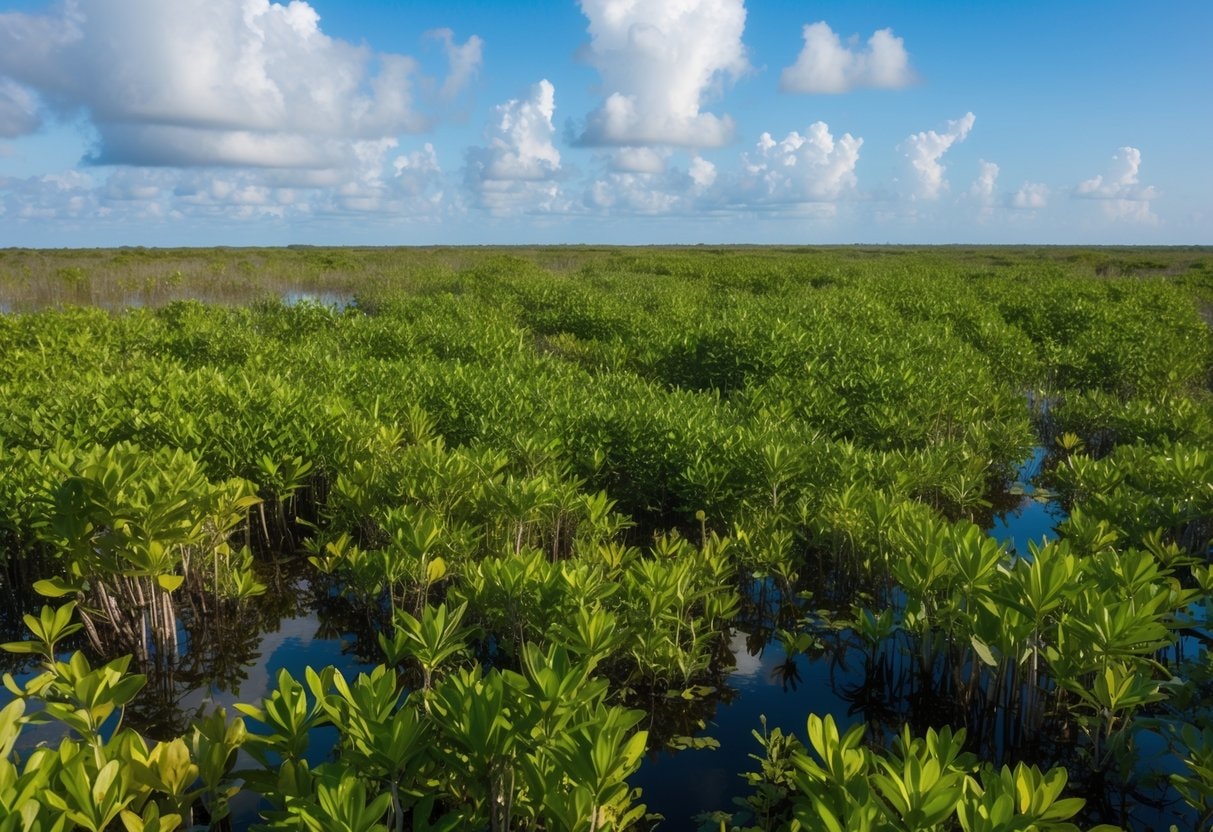
The economic impact of invasive species in Florida causes significant harm to the state. Experts employ various methods to assess the costs these pests impose. Let’s explore how they measure the damage and analyze the associated costs of this pressing issue.
Evaluation of Economic Harm
Invasive species lead to significant economic losses in Florida. They hurt farms, forests, and water systems. Pests eat crops and damage equipment. This causes agricultural losses. Experts look at direct and indirect costs. Direct costs include:
- Crop damage.
- Control efforts.
- Property value drops.
Indirect costs are harder to see. They include:
- Lost tourism.
- Ecosystem damage.
- Health impacts.
Scientists use surveys and economic models to estimate total harm. They track spending on pest control and lost income from damaged resources.
Cost Analysis Frameworks
Researchers use special tools to measure invasive species’ costs. One popular method is the InvaCost database. It collects info on economic impacts worldwide. Critical parts of cost analysis include:
- Identifying affected sectors.
- Estimating current and future damages.
- Calculating control costs.
Experts also look at non-market values. These are things like biodiversity loss that don’t have a clear price tag. They use surveys to see how much people would pay to protect nature. Florida can better understand the true cost of invasive species by using these frameworks. This helps leaders make smart choices about prevention and control.
Effects on Agriculture and Industry
Invasive species create big problems for Florida’s farms and businesses, contributing significantly to the economic impact of invasive species in Florida. They damage crops, disrupt operations, and cost much money to control, placing additional financial strain on local economies.
Agricultural Sector Impacts
Florida’s farms face major threats from invasive pests and plants. Citrus canker has devastated orange groves, forcing farmers to destroy millions of trees. This disease spreads easily and hurts fruit quality. Other invasive insects eat crops and reduce harvests.
Farmers have to spend more on pesticides and other controls. This cuts into their profits. Invasive weeds also cause trouble. They compete with crops for water and nutrients. Removing them takes time and money.
Industrial Challenges
Invasive species create headaches for many Florida industries. They clog waterways, making it hard for boats to move. This hurts fishing and tourism businesses. Power plants have issues, too. Invasive mussels block water intake pipes.
Fixing this is expensive and can shut down operations. Even roads and buildings face damage. Some invasive plants can break through pavement and foundations. Repairs cost a lot and cause delays.
Economic Burden on Local Businesses
Small businesses in Florida feel the pinch from invasive species. Pest control companies are busy, but other firms suffer. Tourism takes a hit when invasive plants or animals overrun beaches and parks. Fewer visitors mean less income for hotels and restaurants.
South Florida’s economy loses millions each year due to the impacts of invasive species. The costs add up from damaged property, lost productivity, and control efforts. Global trade brings many benefits but also new invasive threats. Businesses must be careful not to accidentally bring in harmful species.
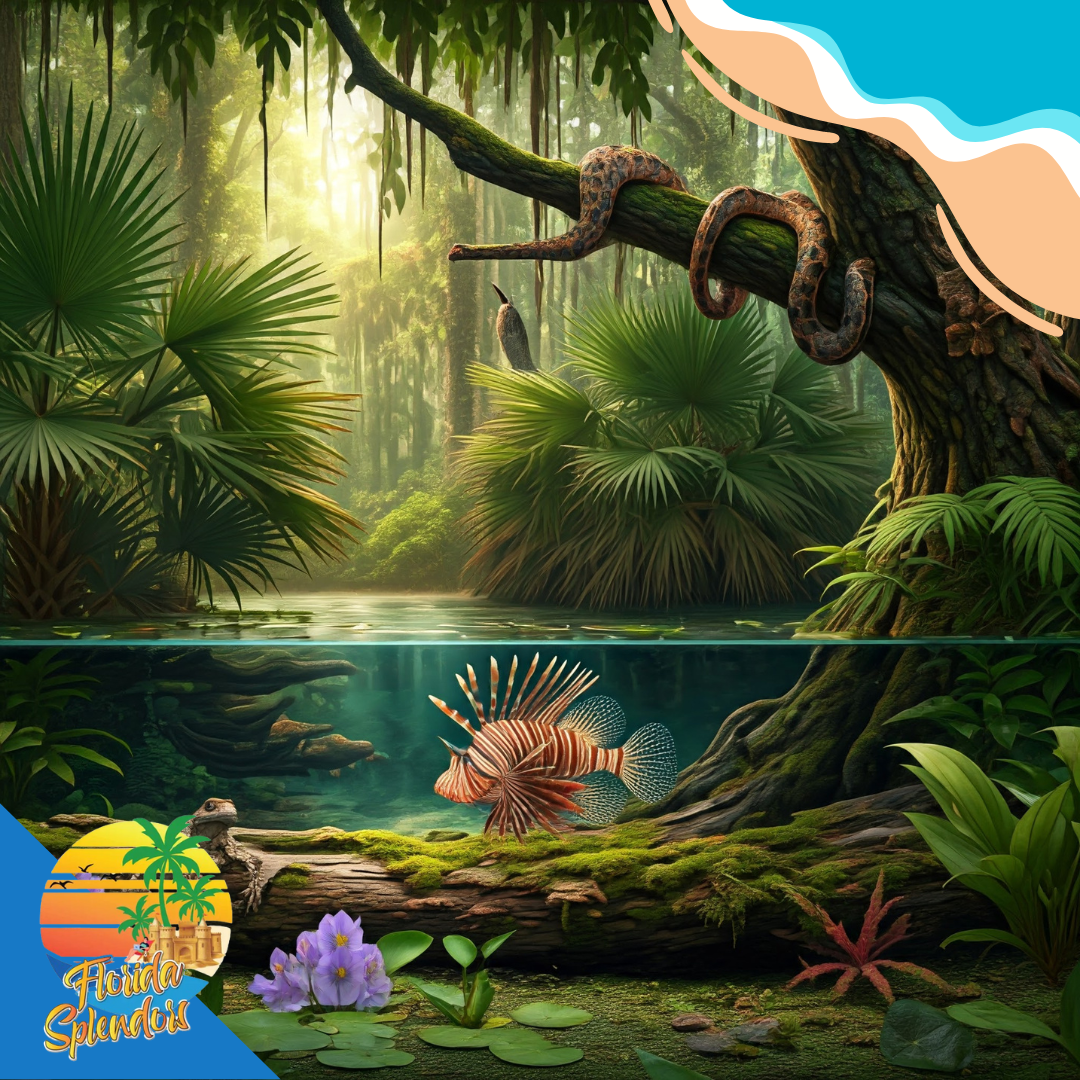
Did you Know?
Florida uses several methods to tackle invasive species. These include prevention, early detection, and community involvement. Each approach is key in protecting the state’s ecosystems and economy.
The Economic Impact of Invasive Species in Florida: Environmental Consequences

Invasive species harm Florida’s natural ecosystems and native wildlife. They change habitats and compete with local plants and animals for resources.
Biodiversity Threats
Invasive species pose a big risk to Florida’s unique plants and animals. They often outcompete native species for food and space. This can make some local species disappear from areas they once called home. For example, Burmese pythons eat many native animals in the Everglades.
They harm populations of rabbits, raccoons, and birds. Some invasive plants grow very fast. They can take over large areas quickly. This leaves less room for native plants to grow. It also changes the food and shelter that native animals rely on.
Ecosystem Impacts
When invasive species arrive, they can change how whole ecosystems work. They may alter the food web, water flow, or even the soil. Invasive plants like water hyacinths can clog waterways. This makes it hard for boats to move and changes water quality. It affects fish and other water life.
Some invasive insects damage trees. This can lead to forest die-offs. When trees die, it changes the habitat for many other plants and animals. Invasive species can also increase fire risks. They may make fires burn hotter or spread faster than usual. This puts both wild areas and human communities in danger.
Public Health and Safety Concerns
Invasive species in Florida pose risks to human health and safety. These non-native plants and animals can spread diseases, cause injuries, and create hazardous conditions for residents and visitors.
Invasive Species and Human Health
Some invasive species in Florida can make people sick. The giant African land snail can spread meningitis. This big snail carries a parasite that infects human brains. Nile monitor lizards may carry salmonella bacteria. People can get sick if they touch the lizards and don’t wash their hands. Certain plants cause health issues, too. Brazilian pepper-tree pollen triggers allergies in many Floridians.
The sap from manchineel trees can cause painful skin blisters. Some people react severely if they eat fruit from these toxic trees by mistake. Invasive mosquitoes bring other health risks. They can spread viruses like Zika, dengue, and chikungunya. These cause flu-like symptoms and sometimes worse problems.
Safety Risks to Florida Residents and Visitors
Invasive animals can hurt people directly. Wild boars may charge at humans and pets. Their sharp tusks can cause bad injuries. Large pythons have attacked small children and pets in the Everglades. Water hyacinth creates hidden dangers in lakes and rivers. The plants form thick mats on the water surface. Boaters and swimmers can get tangled in them and drown. The plants also block access to boat ramps and fishing spots.
Fire ants build large mounds in yards and parks. Their painful stings can trigger severe allergic reactions in some people. Australian pine trees have shallow roots and fall easily in storms. This puts nearby people and buildings at risk during hurricanes.
Tourism and Recreation Effects
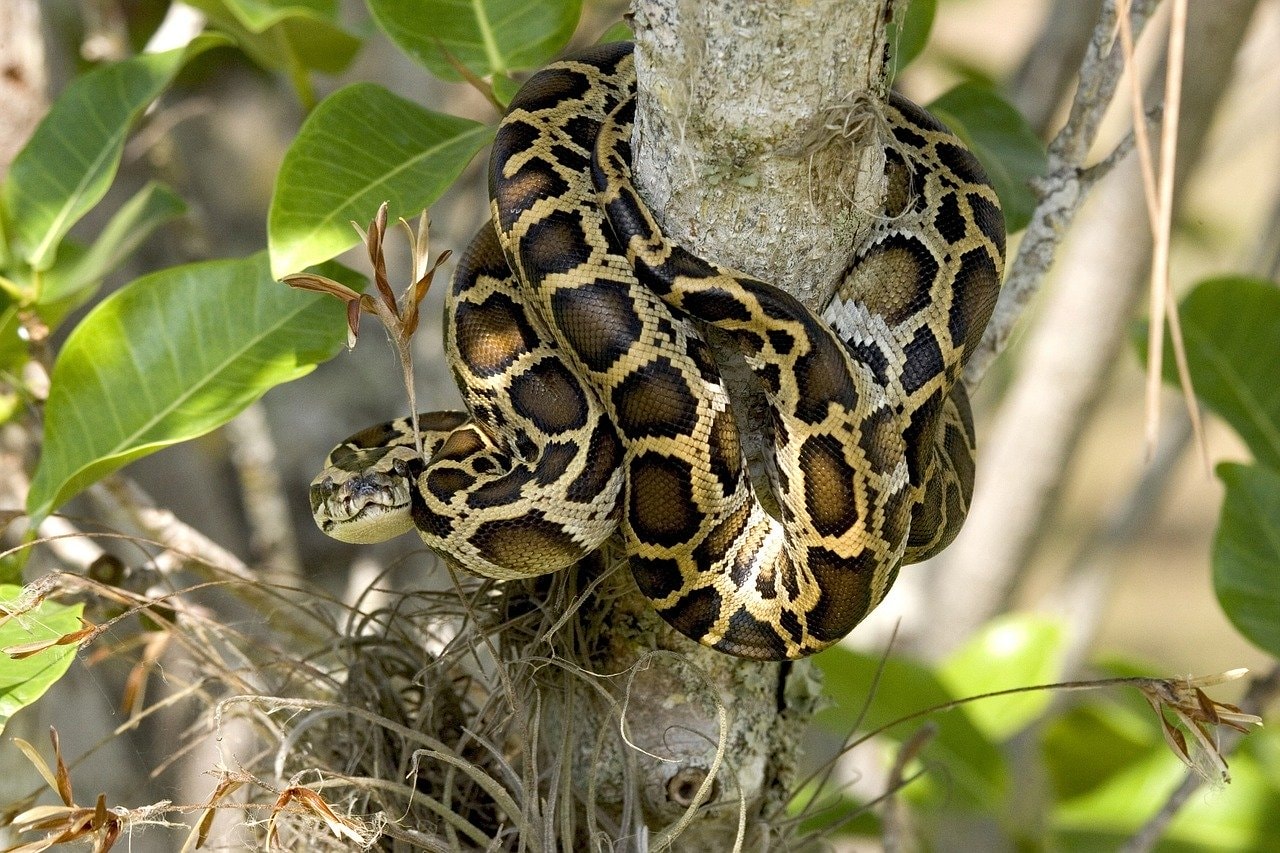
Invasive species in Florida harm tourism and outdoor activities, highlighting the economic impact of invasive species in Florida. They damage natural areas and make some places less fun, leading to fewer visitors. This costs the state money and changes how people enjoy Florida’s outdoors, emphasizing the need to effectively manage these invasive species.
Impact on Florida’s Tourism Industry
Florida’s tourism relies heavily on its natural beauty. Invasive species can hurt property values, tourism, and outdoor recreation. They make beaches less pretty and lakes harder to use. Some examples of problems:
• Invasive plants clog waterways, making boating difficult.
• Harmful algae blooms chase away beachgoers.
• Invasive animals scare off wildlife that tourists want to see.
These issues can lead to fewer visitors. People may choose other vacation spots instead. This means less money for Florida’s economy.
Recreational Areas at Risk
Many favorite outdoor spots face threats from invaders. Parks, beaches, and lakes all see impacts. Invasive aquatic animals can affect how people enjoy these places. Some key risks:
• Fishing spots overrun with non-native fish.
• Hiking trails damaged by invasive plants.
• Campgrounds dealing with new insect pests.
These changes can make outdoor fun less enjoyable. Fishing might not be as good. Hiking could be harder. Camping might have new annoyances. Local governments often spend a lot of money trying to fix these problems. This can mean higher costs for using parks and recreation areas.
The Economic Impact of Invasive Species in Florida: Research and Educational Initiatives
Florida’s fight against invasive species relies heavily on research and education. Universities and state agencies work hard to study and teach people about these species.
University of Florida’s Role
The University of Florida (UF) oversees invasive species research. Their Invasion Science Research Institute focuses on understanding and managing these threats. UF scientists study how invasive plants and animals spread and affect local ecosystems. The university also runs educational programs for students and the public.
These programs teach about the dangers of invasive species and how to spot them. UF/IFAS Extension offices across the state offer workshops and training sessions. They help farmers, gardeners, and homeowners learn how to deal with invasive pests.
Data Monitoring and Reporting
Keeping track of invasive species is a big job. Florida uses advanced technology to monitor their spread. Experts use satellite images and GPS to map where invasive plants grow. They also rely on reports from citizens who spot unusual plants or animals.
The state has set up hotlines and websites where people can report sightings. This helps create a real-time picture of invasive species across Florida. Scientists use this data to predict where invaders might show up next. This helps them plan better ways to stop the spread and protect Florida’s native plants and animals.
Policy and Legislation
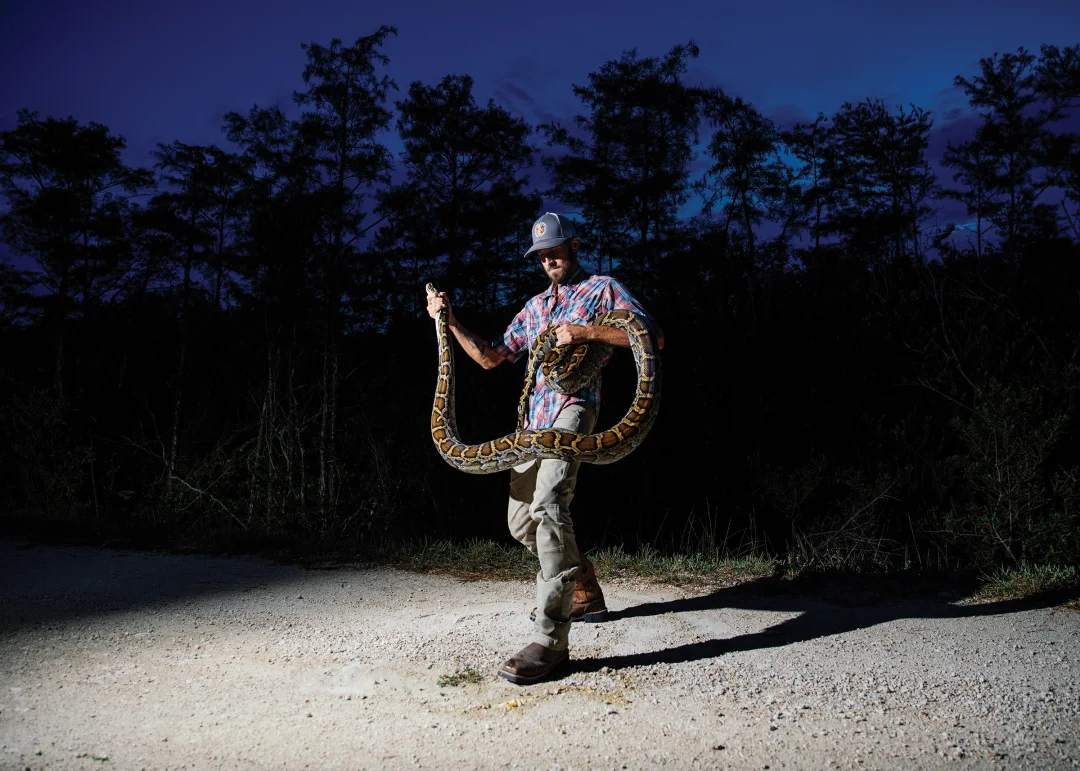
Florida has laws and rules to stop harmful plants and animals from entering the state, reflecting the state’s awareness of the economic impact of invasive species in Florida. These regulations help protect both the environment and the economy. Different groups work together to assess risks and make plans to deal with invasive species, emphasizing the importance of addressing the economic impact of invasive species in Florida through collaborative efforts.
Federal and State Regulations
The U.S. government and Florida have rules about invasive species. These laws aim to keep out plants and animals that could harm the state. For example, bringing in or releasing certain non-native species without permission is illegal.
Florida has its own rules, too. The state has a list of prohibited plants and animals. People can’t own or sell these without special permits. The state also works with other groups to find and stop new invasive species. This teamwork helps protect Florida’s unique ecosystems.
Risk Assessment and Legislation
Florida uses risk assessment to decide which species might become invasive. This process examines how likely a plant or animal will spread and cause harm. Experts study things like:
- How the species reproduces.
- What it eats.
- How it might affect local plants and animals.
This information helps lawmakers create better rules. They can focus on the most dangerous species and make smart choices about what to allow in Florida. The state also has plans for what to do if a new invasive species is found. These plans help everyone act quickly to stop problems before they get big.
Florida Fish and Wildlife Conservation Commission
The Florida Fish and Wildlife Conservation Commission (FWC) plays a big role in managing invasive species. They make and enforce rules about non-native plants and animals. The FWC:
- Runs education programs to teach people about invasive species.
- Gives out permits for certain non-native species.
- Works to remove invasive plants and animals.
They also team up with other groups to tackle invasive species problems. This includes working with scientists, local communities, and other government agencies. The FWC keeps a close eye on Florida’s waters and lands. They look for new invasive species and work to control ones already here.
Here’s a video to help you understand more about invasive species.
By: Explore Nature
Addressing the Economic and Environmental Challenge of Invasive Species in Florida
In conclusion, the economic impact of invasive species in Florida is significant and multifaceted, affecting not only the state’s natural ecosystems but also its agricultural, tourism, and public health sectors. The challenges these non-native species pose lead to an estimated annual cost of $100 million in management efforts alone, not to mention the additional economic losses incurred from reduced agricultural yields, diminished tourism revenues, and health-related concerns.
Addressing this complex issue requires a coordinated approach that involves effective management strategies, ongoing research, and public education. By investing in prevention, monitoring, and control measures, Florida can safeguard its unique biodiversity and protect the economic vitality that its natural resources provide. As the state continues to face the challenges of invasive species, policymakers, scientists, and the community must work together, fostering a resilient environment that benefits both people and wildlife for generations to come.
Frequently Asked Questions
What Effects Do Invasive Species Have on Florida's Economy?
Invasive species cost Florida a lot of money. They damage crops and hurt farming. In Florida, agricultural losses from invasive plants, animals, and diseases are estimated at $179 million per year. These pests also harm tourism. They make fishing and boating less fun. Controlling invasives is very expensive for the state.
How Do Invasive Species in the Everglades Affect Local Businesses?
Invasive species in the Everglades hurt local businesses. Burmese pythons have caused severe declines in mammal populations. This affects wildlife viewing tours. Invasive plants clog waterways. This makes it hard for airboat tour companies to operate. Fishing guides lose business when invasive fish harm native species.
Which Invasive Species Have the Greatest Economic Impact in Florida?
Some invasive species cost Florida more than others. Burmese pythons in South Florida are very concerning. They eat many native animals. Invasive plants like Brazilian pepper and melaleuca are also very costly. They take over large areas. Removing them is expensive.
Excited to Explore Florida’s Best-Kept Secrets?
Become a part of the Florida Splendors community and dive into endless inspiration and excitement! Find hidden gems, connect with like-minded adventurers, and embrace your love for the Sunshine State. Whether you’re paddling through serene waters, lounging on beautiful beaches, or wandering vibrant cities, we’ve got something for everyone!
Follow us on:
Let’s experience Florida’s most unforgettable adventures together!

